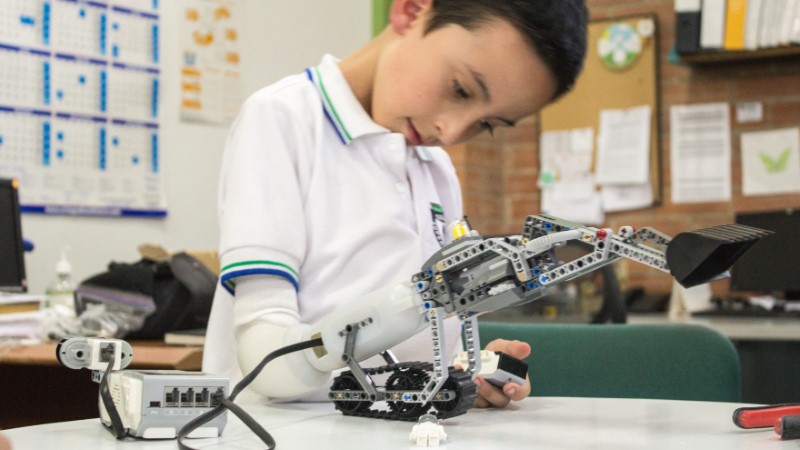A team of engineers have developed a novel e-dermis that will enable amputees perceive a real sense of touch through the fingertips of their prosthetics.

The e-dermis conveys information to the amputee by stimulating peripheral nerves in the arm
HIGHLIGHTS
- New e-dermis recreates a sense of touch and pain by sensing the stimuli
- Scientists are trying to bring a human touch through the prosthetics
- The e-dermis technology could be used to make robotic systems more human
The e-dermis device does this by electrically stimulating the amputee's nerves in a non-invasive way, through the skin, said Nitish Thakor, Professor at the Johns Hopkins University in Maryland, US.
"For the first time, a prosthesis can provide a range of perceptions, from fine touch to noxious to an amputee, making it more like a human hand," Thakor added.
The study, detailed in the journal Science Robotics, revealed that the e-dermis enables its user to sense a continuous spectrum of tactile perceptions, from light touch to noxious or painful stimulus.
Bringing a more human touch to modern prosthetic designs is critical, especially when it comes to incorporating the ability to feel pain, said Luke Osborn, a graduate student at the varsity.
"Pain is, of course, unpleasant, but it's also an essential, protective sense of touch that is lacking in the prostheses that are currently available to amputees," Osborn explained.
The team created a "neuromorphic model" mimicking the touch and pain receptors of the human nervous system, allowing the e-dermis to electronically encode sensations just as the receptors in the skin would.
They found that the test subject was able to perceive these sensations in the phantom hand.
Further, in a pain-detection task, the test subject and the prosthesis were able to experience a natural, reflexive reaction to both pain while touching a pointed object and non-pain when touching a round object.
This e-dermis technology could be used to make robotic systems more human, and it could also be used to expand or extend to astronaut gloves and space suits, Osborn said.
(This story has not been edited by NDTV staff and is auto-generated from a syndicated feed.)
DoctorNDTV is the one stop site for all your health needs providing the most credible health information, health news and tips with expert advice on healthy living, diet plans, informative videos etc. You can get the most relevant and accurate info you need about health problems like diabetes, cancer, pregnancy, HIV and AIDS, weight loss and many other lifestyle diseases. We have a panel of over 350 experts who help us develop content by giving their valuable inputs and bringing to us the latest in the world of healthcare.












